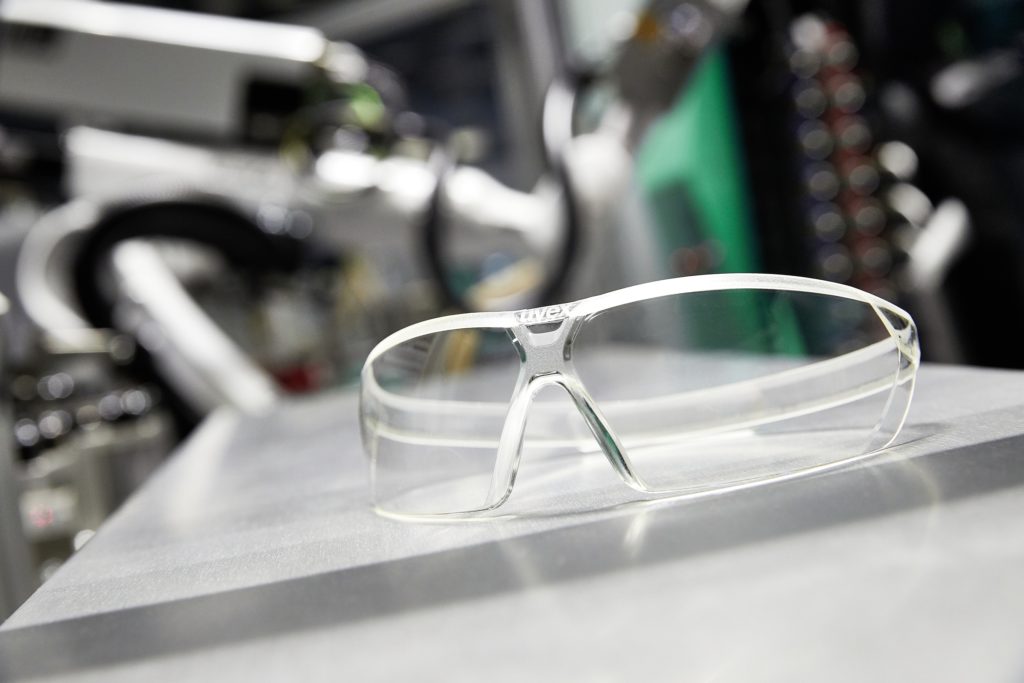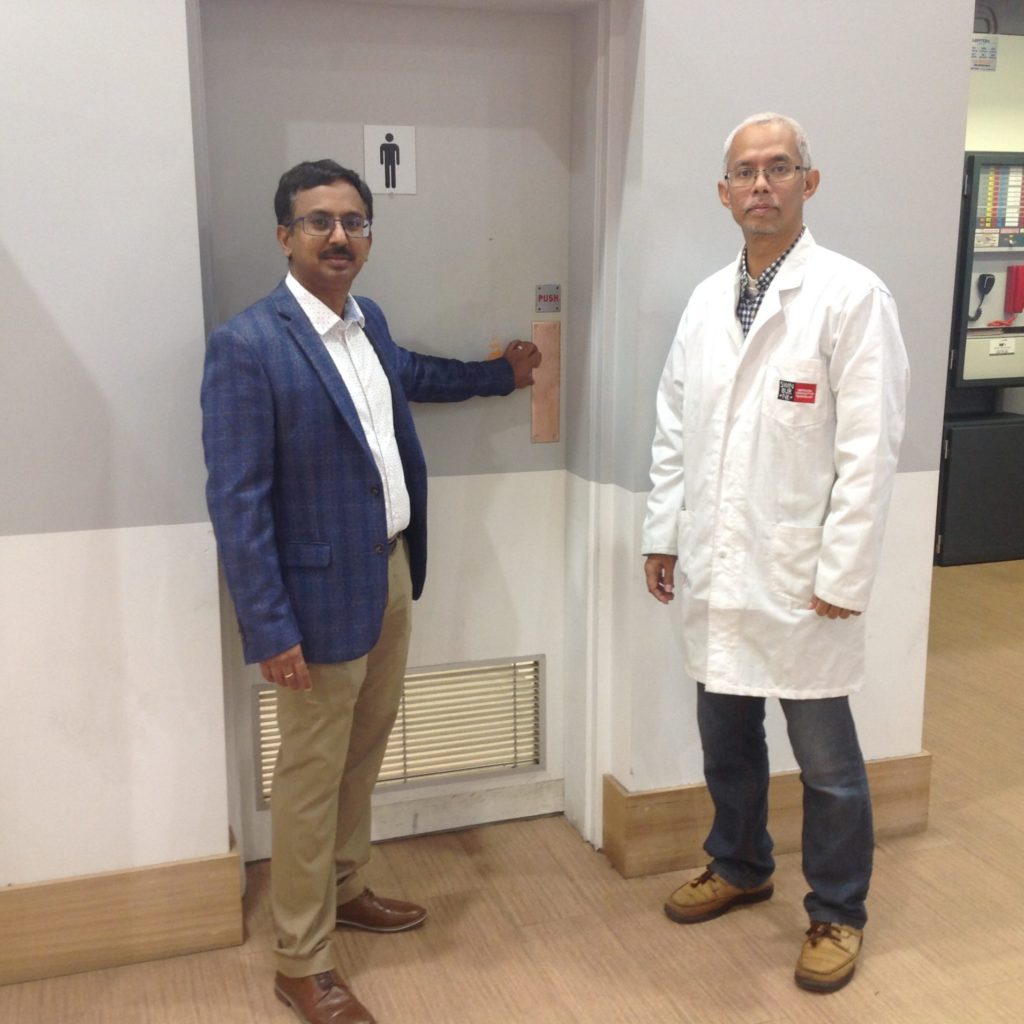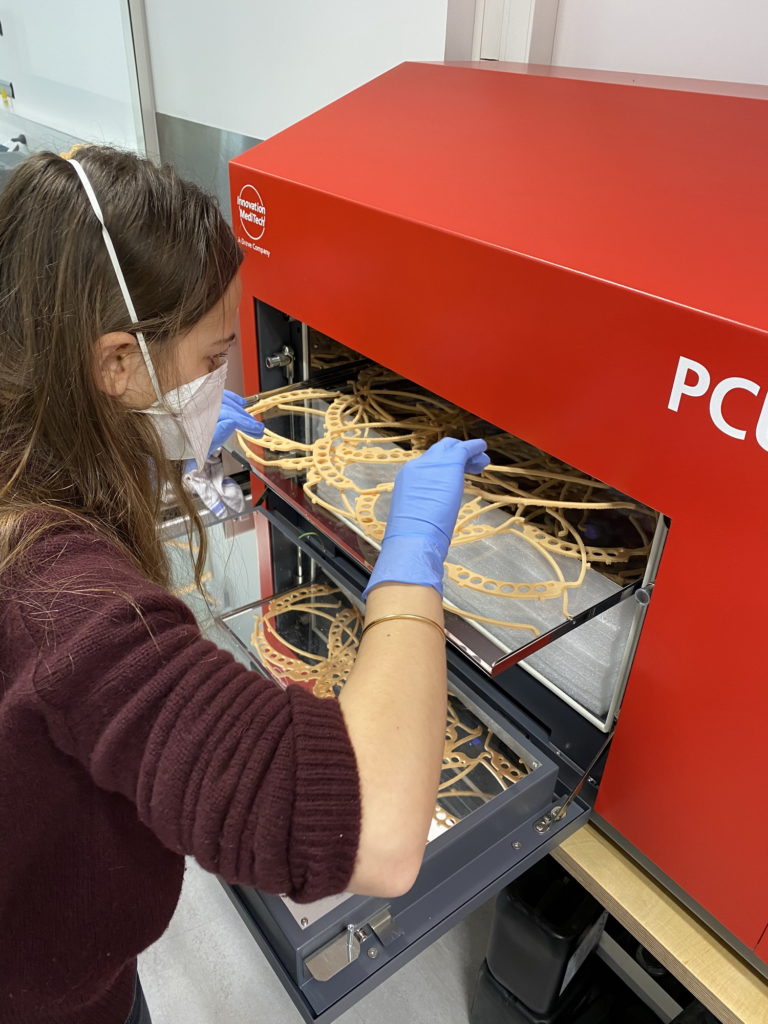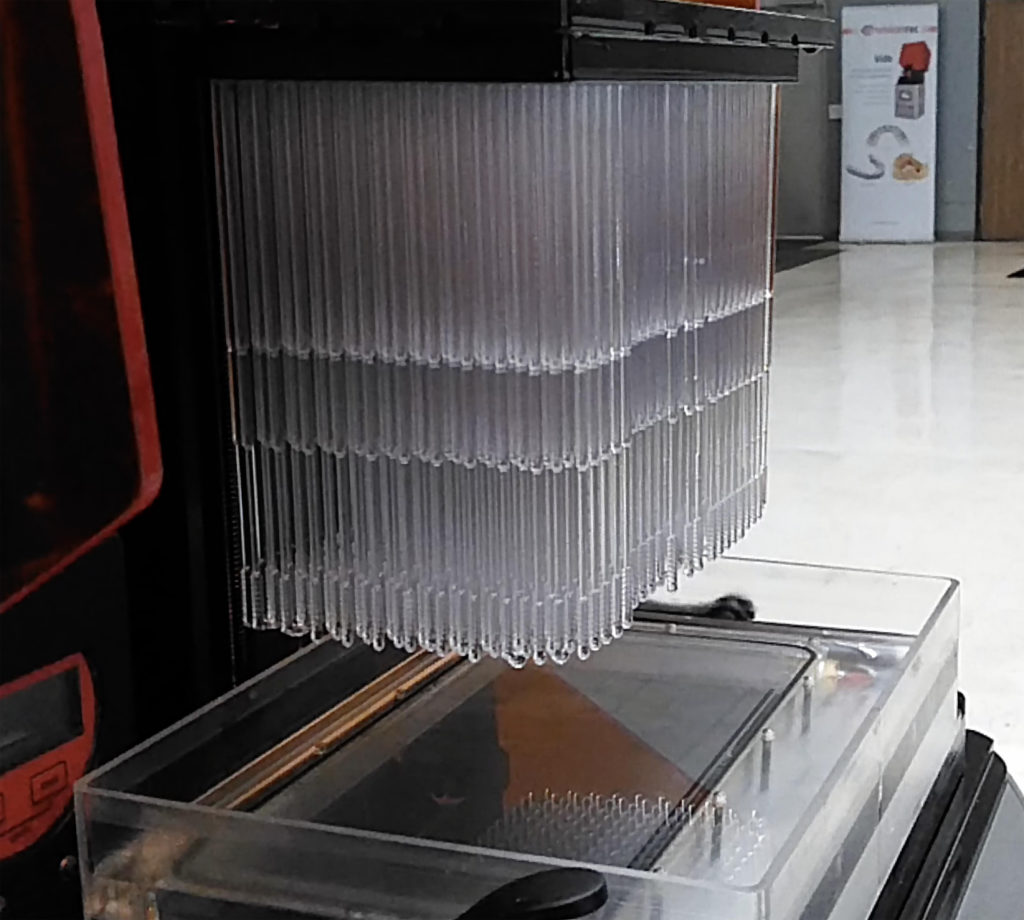Companies, organizations and individuals continue to attempt to lend support to the COVID-19 pandemic supply effort. We will be providing regular updates about these initiatives where necessary in an attempt to ensure that the 3D printing community is aware of what is being done, what can be done and what shouldn’t be done to provide coronavirus aid.
Australian startup SPEE3D has deployed its kinetic 3D printing method called SP3D to print anti-microbial copper onto metal surfaces, taking advantage of the fact that copper kills 96 percent of SARS-CoV-2 germs on contact in just two hours. SPEE3D has modified its technology, which hurls metal particles at a printing substrate at supersonic speeds and causes them to bond by sheer force, to print on existing metal surfaces. According to studies by an accredited medical lab called 360Biolabs, SPEE3D’s ACTIVAT3D copper was able to kill 96% of the virus in two hours and 99.2% of the virus in 5 hours, compared to stainless steel, which had no effect on the virus.
The company is now exploring methods for coating existing metal substrates, such as door handles and rails, with copper. Though stainless steel and plastic surfaces can be disinfected, continuous disinfection is clearly impossible. SPEE3D has developed a method for coating a stainless-steel door touch plate and other handles in just five minutes. After sending parts to partners globally, copper fixtures are now being installed in such locations as Charles Darwin University (CDU) in Darwin, Swinburne University in Melbourne, the University of Delaware in the USA and in Japan.
While SPEE3D coats metal objects in pure copper, Copper3D in Chile has been developing ventilator splitters and face masks from its copper filament. These stories raise the question of whether or not 3D printing is necessary for this strategy or if other methods exist for applying copper to objects is a possibility.
In fact, there are other methods, ranging from similarly scientifically complex to extremely straightforward. Before the outbreak, theme parks in Chile and hospitals in France began installing copper fixtures made via traditional methods. To deploy the material rapidly in response to the crisis, hospitals in Taiwan are wrapping doorknobs and elevator buttons in simple copper foil. Researchers at the Indian Institute of Technology (IIT) Guwahati created an antimicrobial spray made up of copper, silver and other ingredients. A Pennsylvania fire department is using a product called CuVerro Shield developed by Aereus Technologies to retrofit its stretchers.
While it may be perceived that hand gel dispensers are less expensive than copper fixtures, they do not kill all germs. Moreover, the University of York’s Health Economics Consortium determined that reducing patient time in hospital reduces overall costs with copper fittings paying for themselves in just two months. Copper may also be just as expensive to install as stainless steel.
Of course, companies continue to produce personal protection equipment for healthcare staff and the public. Prodways Group and its network of customers are manufacturing shields for local medical professionals. This includes Crown Ceram and Laboratoire La Perle in France, Plus Dental in Germany, NM3D Ibérica and Nort3D in Spain and Portugal, Namitech in Italy, Dental Crafter in the United States and Laboratoire Dentaire Summum in Canada, who have together made 5,000 face shields using Prodways equipment. Prodways has itself provided the STL files, as well as the print setup parameters, including proper nesting, part placement and assembly documentation. The French company is also in discussions with medical device manufacturers to find other ways that it can help during the pandemic.
EnvisionTEC has announced that clinical trials have been completed for its 3D printed nasal swabs for COVID-19 testing. The IRB-approved clinical trial involved mechanical and chemical testing to ensure the swabs could pick up viral RNA particles and did not interfere with the PCA/reagents. The tests also examined the chemical safety of the swabs, that they could bend 180 degrees without breaking and that they could safely collect a sufficient amount of virus particles from the nasal passage for effective testing. A number of its FDA-registered Envision One cDLM users, such as dental labs, are hoping to participate in production. The company suggests that an Envision One can produce 2400 swabs in 24 hours.
MakerOS has used its network of 3D printer operators to launch Makers Against COVID, which is meant to link fabricators and 3D printing companies to organizations in order to make bulk orders of PPE, such as face shields and masks, hands-free door openers and ventilator parts. So far, the network has linked a senior housing community in Michigan with a 3D printing firm to make face shields for the staff.
The project is relying on MakerOS Overflow, a supply and sales channel that has supported the production of over 10,000 face shields by MakerOS customers by tackling the logistics between production and requests. Though MakerOS had intended to perform a beta launch of the product later this year but has opened it up earlier to support medical supply production for the coronavirus outbreak.
Arburg, which has recently been increasing its role in the 3D printing industry via its own 3D printing platform and the acquisition of German RepRap, is manufacturing protective eyewear designed by Uvex and using plastic from Ems-Chemie. In response to a request from a hospital in Rottweil, Germany, Arburg manufactured an initial batch of 20,000 goggles using injection molding.

Uvex protective goggles in the latest design, as they come ready to use from the injection moulding machine. The goggles are distributed to care and medical personnel in Germany and Switzerland via official channels. Image courtesy of Arburg.
The three partners had previously worked together to produce thick sunglasses as trade show demonstrators, which were redesigned to make safety goggles. Once certified by Uvex for safety use, Arburg used a simplified injection molding process in which mass-produced goggles come out of the system read to use. A six-axis industrial robot sorts the glasses, discarding bad parts and placing good parts in a cooling station, where manual packaging is performed. 500 kilograms of transparent PA12 material was provided at no cost by Ems-Chemie. The first 20,000 goggles have been distributed to hospitals, nursing homes and “civil defence organisations” in Germany and Switzerland.
As the pandemic continues to grip the world, we will continue to provide regular updates about what the 3D printing community is doing in response. As always, it is important to keep safety in mind, remain critical about the potential marketing and financial interests behind seemingly good humanitarian efforts from businesses, and to do no harm.
Subscribe to Our Email Newsletter
Stay up-to-date on all the latest news from the 3D printing industry and receive information and offers from third party vendors.
You May Also Like
HP and Global Steel Giant ArcelorMittal Announce Strategic 3D Printing Collaboration
Fortune Global 500 company ArcelorMittal, the world’s second-largest supplier of steel, has announced a strategic collaboration with HP to develop new additive manufacturing (AM) applications for ArcelorMittal’s steel powders. Via...
3D Printing News Briefs, November 9, 2024: Concept Car, Afloat 3D Printing, & More
In today’s 3D Printing News Briefs, we’ll start with business, as Anisoprint appointed AM industry veteran Tuan TranPham as President of the Americas and APAC. Then we’ll move onto automotive...
Unprecedented Range of Mold Solutions Now Available from a Single Technology
As the additive manufacturing (AM) sector rapidly evolves, Axtra3D stands out with its Lumia X1 3D printer, pushing the boundaries of mold-making with an unprecedented range of mold solutions. Utilizing...
3D Printing Webinar and Event Roundup: November 3, 2024
Coming up this week, Stratasys continues its advanced training and North American tour, and will also hold a webinar. The EURONAVAL event is taking place, and so are JIMTOF, ICALEO,...







































